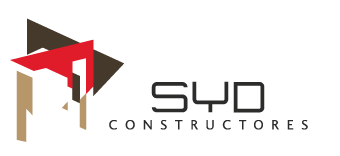Let’s assume that a corporation begins operations on November 1 in an industry where it is common to give credit terms of net 30 days. So, any provision in the accounting record is added back to calculate the taxable income. However, if you have written off the account balance, it can be deducted on a business income tax return to get relief.
Knowing how they affect production costs and product quality is key for businesses of all sizes. Effective raw material management—covering sourcing, procurement, and inventory control is key to staying competitive. Every industry, from food to construction, relies on the right raw materials for success.
Accounting Dictionary
Historical data serves as the foundation for these estimates, providing a statistical basis that enhances the precision of the forecasts. By analyzing patterns from past transactions, a company can identify trends and rates of default that are likely to continue. This retrospective examination is not just about past defaults but also encompasses the broader financial behavior of customers, including payment delays and partial settlements.
Account
- The direct write-off method is a less theoretically correct approach to dealing with bad debts, since it does not match revenues with all applicable expenses in a single reporting period.
- Instead, it acknowledges that a certain percentage of outstanding receivables will not be recovered.
- We have seen how businesses estimate and record bad debts expense, write off uncollectible accounts, and report bad debts in financial statements.
- Based on this estimation, ABC Company creates an allowance for bad debts of $5,000 (5% of $100,000).
The debit impact of this journal entry is the same as in the case of the indirect method. However, credit entry eliminates the debtor’s balance from the books without taking away allowance creation. Moreover, when an organization creates an allowance for bad debts, they are considered expenses. the allowance method definition Companies source raw materials from nature, farms, or suppliers before processing them into usable forms. These materials significantly impact production efficiency, costs, and overall product quality. Using the percentage of sales approach, companies calculate the cost of bad debt as a fixed percentage of overall sales.
The key account used in the allowance method is «Allowance for Doubtful Accounts,» a contra-asset account that reduces the total balance of accounts receivable. Companies use the direct write-off method when they decide there is no chance of receiving the money that a customer owes. To write a debt off, companies debit the bad debt expense account and credit the accounts receivable account. The Internal Revenue Service requires the direct write-off method, although it does not conform to generally accepted accounting principles (GAAP).
The allowance for doubtful accounts is only an estimate of the amount of accounts receivable which are expected to not be collectible. You may not even be able to specifically identify which open invoice to a customer might be so classified. When you eventually identify an actual bad debt, write it off (as described above for a bad debt) by debiting the allowance for doubtful accounts and crediting the accounts receivable account. The allowance method is an accounting technique that enables companies to take anticipated losses into consideration in itsfinancial statementsto limit overstatement of potential income. To avoid an account overstatement, a company will estimate how much of its receivables from current period sales that it expects will be delinquent.
We have seen how businesses estimate and record bad debts expense, write off uncollectible accounts, and report bad debts in financial statements. At the end of the year, ABC Company reviews their collection experience and the age of outstanding receivables. They determine that the estimated bad debts percentage should be increased to 7% due to economic conditions and customer payment trends. As a result, they adjust the allowance for bad debts to reflect the higher provision for potential losses.
Find out how to help your clients manage their receivables more effectively
Examples include wood for furniture, cotton for clothing, and metals for construction. The raw materials definition varies by industry but always refers to the essential components needed to manufacture goods. Understand how it affects finances and gain valuable insights into managing your accounts. Bad debt should be written off when it is determined that a specific account receivable is uncollectible. This decision is typically made after exhausting all reasonable collection efforts and assessing the customer’s financial situation.
It is important to promptly record any recoveries to ensure that the financial statements provide an accurate representation of the company’s assets and liabilities. Furthermore, the Allowance Method allows businesses to match the revenue and related expenses in the same accounting period. This practice follows the generally accepted accounting principles (GAAP) and provides a more realistic picture of the company’s financial performance. By recording bad debts as an expense in the same period as the related revenue, businesses can accurately reflect the true profitability of their operations. The allowance is a contra account, which means that it is paired with and offsets the accounts receivable account. When a specific bad debt is identified, the allowance for doubtful accounts is debited (which reduces the reserve) and the accounts receivable account is credited (which reduces the receivable asset).
Natural Raw Materials
The direct write-off method is a less theoretically correct approach to dealing with bad debts, since it does not match revenues with all applicable expenses in a single reporting period. Using a technology-driven approach for businesses like South East Client Services (SECS), which specializes in portfolio management, allows for more accurate bad debt estimates and improved liquidity. SECS’s expertise in managing distressed accounts ensures businesses can stay ahead of potential losses. For instance, if 30% of accounts over 90 days old are typically written off, the company would use that percentage to estimate bad debts for those accounts.
A bad debt expense is recognized when a receivable is no longer collectible because a customer is unable to fulfill their obligation to pay an outstanding debt due to bankruptcy or other financial problems. The mechanics of the allowance method are that the initial entry is a debit to bad debt expense and a credit to the allowance for doubtful accounts (which increases the reserve). The matching principle requires a business to record revenues and their related expenses in the same accounting period. Because of this violation, GAAP allows a business to use the direct write-off method only for insignificant amounts. This means creating a debit to the accounts receivable asset account in the amount of the recovery, with the offsetting credit to the allowance for doubtful accounts contra asset account. If the original entry was instead a credit to accounts receivable and a debit to bad debt expense (the direct write-off method), then reverse this original entry.
Compared to the direct write-off method, the allowance method is preferred because of its usefulness and applicability. Furthermore, this is called an income statement or statement of the comprehensive income approach.
- It guarantees accurate financial reporting by adhering to Generally Accepted Accounting Principles (GAAP).
- The amount you wrote off in past months for doubtful accounts is probably a good predictor of what you might write off in the future.
- The provision for doubtful debts is the estimated amount of bad debt that will arise from accounts receivable that have been issued but not yet collected.
- This approach avoids drastic fluctuations in financial statements that could occur if bad debts were recognized only when they become apparent.
- Because of this violation, GAAP allows a business to use the direct write-off method only for insignificant amounts.
- This may not occur until several months after a sale transaction was completed, so the entire profitability of a sale may not be apparent for some time.
Instead, it acknowledges that a certain percentage of outstanding receivables will not be recovered. This approach avoids drastic fluctuations in financial statements that could occur if bad debts were recognized only when they become apparent. If the allowance is overestimated, net income is understated, and if it is underestimated, net income is overstated. Adjustments are required to correct the allowance and ensure financial statements accurately reflect the company’s financial position.
When a company’s Allowance for Doubtful Accounts is understated, the credit balance in this account is too small. This indicates that the company has reported too little of Bad Debts Expense and therefore too much net income. For example, based on previous experience, a company may expect that 3% of net sales are not collectible. If the total net sales for the period is $100,000, the company establishes an allowance for doubtful accounts for $3,000 while simultaneously reporting $3,000 in bad debt expense. Under this method, a company creates an allowance or reserve for bad debts on its financial statements. The allowance is a contra-asset account that reduces the accounts receivable balance to reflect the estimated portion that is unlikely to be collected.
Understanding the Allowance Method for Estimating Doubtful Accounts
The allowance method for doubtful accounts serves as a proactive measure to anticipate and manage the impact of potential bad debts. By setting aside a reserve based on a percentage of sales adjusted for customer risk, companies ensure a more accurate representation of their financial health. This reserve acts as a buffer against expected losses, aligning bad debt expenses with the sales they relate to within the same reporting period.
Tracking doubtful accounts provides an accurate representation of a company’s financial health and ensures compliance with accounting principles. The allowance method also allows for subsequent recoveries of debts previously written off. If a customer pays after their debt has been written off, the company will reverse the write-off by debiting accounts receivable and crediting the allowance for doubtful accounts. Then, upon receipt of payment, the company will record the cash receipt by debiting cash and crediting accounts receivable. This reinstatement ensures that the collection of the debt is properly reflected in the financial records.

